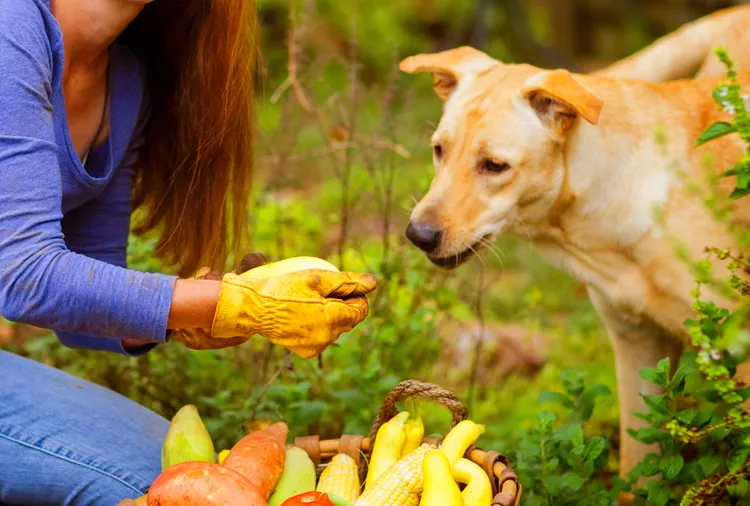Your dog may be perfectly calm and have no behavior problems around women and children, but it may become a completely different dog when a man enters the room or tries to approach. Some dogs try to hide or start cowering, shaking, or urinating out of nervousness. Others become anxious or show signs of aggression, like growling or baring their teeth. In some cases, a dog may unexpectedly attack or bite a man.
However, a fear of men is not an uncommon phobia in dogs, and some very well-behaved and well-adjusted dogs share this fear. Fortunately, there are some things you can do to help your dog overcome its fear and learn to accept the men it encounters.
Why Do Some Dogs Fear Men?
When people discover that a dog is afraid of men, they often attribute the fear to a bad experience. However, there are a variety of reasons why your dog may fear men in general or only those who are not part of its immediate family.
- Being abused by a man may cause a lifelong fear of all men. For the majority of dogs, this is not the most likely culprit, though.
- In many cases, being afraid of men can be traced to a lack of socialization with men when the dog was a puppy. Even a dog that has lived with a man can be fearful in the presence of unfamiliar men.
- Men can be more intimidating in a dog's eyes. They may be taller and bigger than women and children, have deeper voices, and may have different types of features, such as facial hair. From a dog's perspective, these things might be scary.
How to Ease Your Dog's Fear
The difficulty of correcting this behavior depends on the severity of your dog's fear. Some dogs are only mildly fearful, while others may be terrified. No matter what, remember to be patient with your dog, because it can take a lot of time for any dog to overcome any phobia. In the meantime, keep things as positive as possible and try a few things to help ease your dog's anxiety.
Stay in the Dog's Comfort Zone
First of all, you should not force your dog beyond its comfort zone. If there are men in your household or men who visit frequently, avoid pushing your dog to accept their attention. Your attempts can backfire and actually strengthen the fear. In the worst-case scenario, your efforts may lead the dog to bite either you or the man if it's prevented from escaping.
Let Your Dog Approach
Allow your dog to approach men on its own. This may be hard for a man who loves dogs, but the best thing he can do is ignore the fearful dog. Trying to force friendship on the dog may have the opposite effect and intensify the dog's fear. Allow your dog to decide how close it wants to get to any man.
Offer Treats for Encouragement
When you're trying to break your dog of this fear, be sure that any man you enlist to help you keeps treats handy while he's around your pet. Whenever the fearful dog gets even a little closer than usual, the man can very gently toss a couple of treats in the dog's direction. It may take a while for the dog to accept treats from a man, but eventually, you may be able to train your pup to expect good things when it approaches a man.
Desensitize Your Dog
Desensitization is the process of using treats and praise to gradually let your dog know that it's safe to approach men. In severe cases, don't start out with the dog and a man in the same room. Instead, try to keep your dog a safe distance from the man, while you give it treats and praise.
Over time, you may be able to slowly close the distance between the dog and the man without the dog succumbing to its fear. While your dog may never feel completely comfortable around men, it may develop the ability to be in the same room without showing aggression.
Hire a Dog Trainer
If your dog's fear is especially pronounced, it's beneficial to have the help of an experienced dog trainer or behaviorist. A professional will be able to gauge your dog's comfort level and can help you move ahead safely in the process of desensitization.
Work on Obedience Training
The better trained your dog is, the more likely you'll be able to get it to focus on you in stressful situations. Make obedience training part of your daily routine with your fearful dog and you should begin to see signs of progress.
Use Safety Precautions
If a fearful dog is successful in chasing a man away by biting him, it's more likely to bite again. Rather than escalate your dog's fear-based aggression, your best bet is to take precautions to prevent that first bite. Keep the dog in a different room or its crate when a man is visiting. If you typically encounter men when you're walking your dog, a muzzle might be a good idea. If your dog needs to wear a muzzle, be sure it is big enough to allow for panting so your dog doesn't overheat. Communicating that your dog is afraid will also help reduce unpleasant situations. If you see someone approaching that you know your dog will not react well to, inform them of the situation and try to avoid further contact.




















